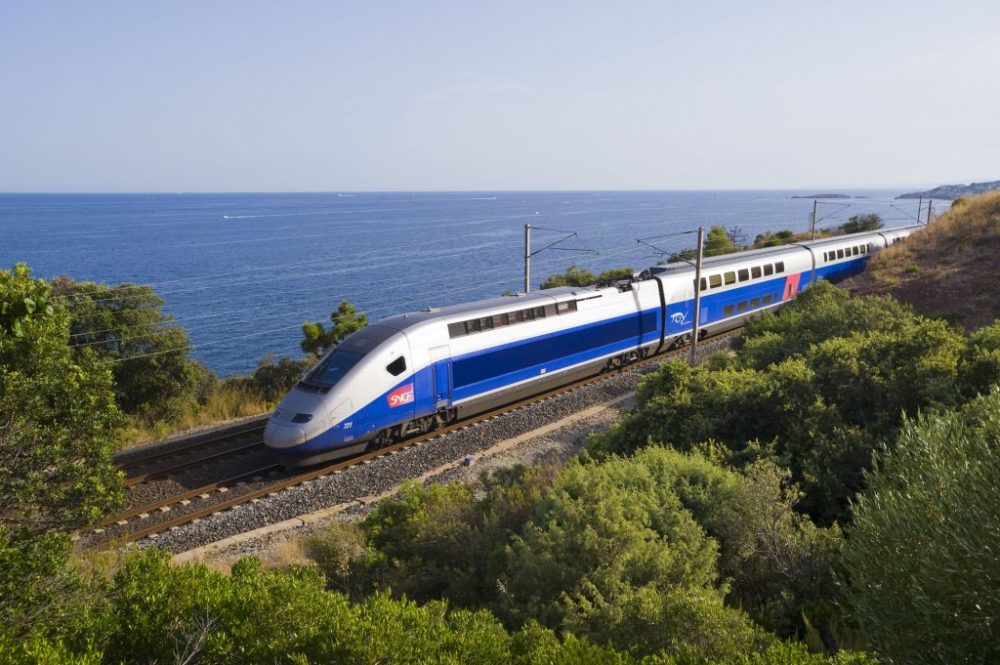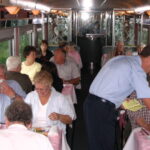The French Have Figured It Out.
Three years ago I was in Paris and having something to eat in one of the several street corner cafés within a two-minute walk from my hotel. It was a weekday evening, but every table was taken, both inside the restaurants and spilling out onto the sidewalk. It was the same every night I was there.
.
I asked one of the waiters how all these 30-somethings could afford to eat out so much.”Because we don’t need cars here,” he said. “and what money we save, we spend on friendship.”
.
What the French do have is very good public transportation. It’s the metro that gets them around within Paris and for travel to and from almost anywhere throughout the rest of the country, there’s the French national railroad company, Société nationale des chemins de fer français.

In addition to a variety of other rolling stock, SNCF has 80 of these high-speed bi-level trainsets. Each will transport more than 500 people and it’s common to see two trainsets coupled together. That’s one long train carrying more than 1,000 people at speeds up to 200 miles-per-hour.
.
What does that mean for an average french person? Consider: It’s 410 miles from Paris to Marseille, a major city on the Mediterranean with some 900,000 inhabitants. The French TGV completes the trip in three hours and 5 minutes, an average speed of almost 140 miles-per-hour. The lowest fare is about $60; there’s a train leaving every 40 minutes.
.
By comparison, it takes an Amtrak train about three hours and 20 minutes to travel the 230 miles from Penn Station in New York City to Union Station in Washington, D.C. That’s an average speed of about 70 miles-per-hour.
.
Of course not everyone is traveling hundreds of miles between major cities. If, for instance,I want to take a day trip to Giverny and visit the home of the French impressionist Claude Monet. No problem. There are four trains leaving Paris before noon and all our will stop at Giverny. It’s a 50-minute ride and the fare is $11.
.
Anyone—well, OK, almost anyone—who visits Europe and does any traveling around that continent, will come back to the US with an awareness of what a coordinated, integrated high-speed rail system can do for an ordinary citizen’s mobility. And he or she will wonder why we’re still riding Amtrak trains, everywhere outside of the Northeast Corridor at 79 miles an hour.
.



